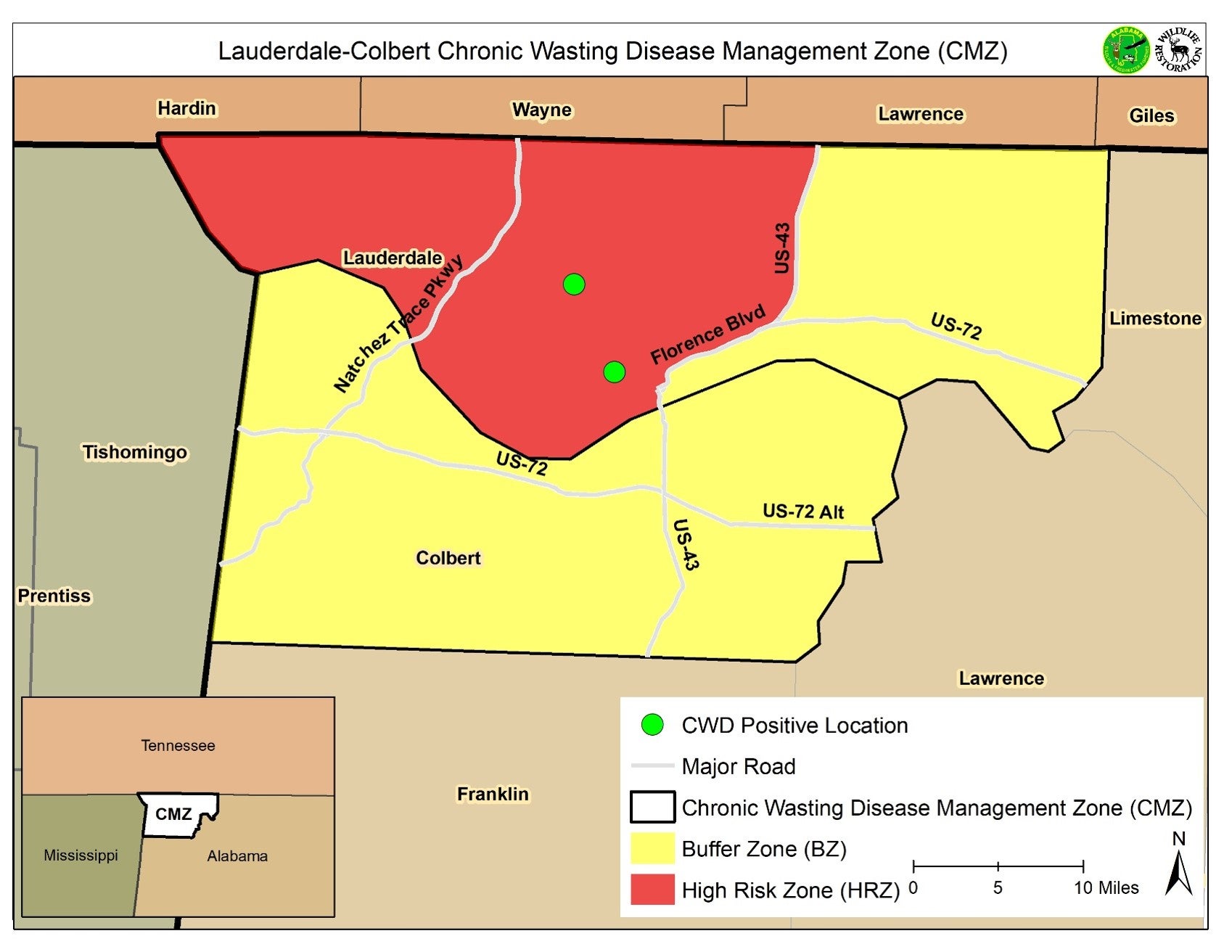By DAVID RAINER, Alabama Department of Conservation and Natural Resources
Chuck Sykes, Director of the Alabama Department of Conservation and Natural Resources’ (ADCNR) Wildlife and Freshwater Fisheries (WFF) Division, confirmed that a second white-tailed deer in Lauderdale County in northwest Alabama has tested positive for chronic wasting disease (CWD) in a report to the Alabama Conservation Advisory Board (CAB) Saturday in Montgomery.
“Unfortunately, we knew it was going to happen,” Sykes said. “We prolonged it as long as possible by implementing proper regulations and educational programs to prevent artificial introduction of CWD. But we knew as close as it was in Mississippi and Tennessee that it was coming eventually.”
On January 7, 2022, when the first CWD-positive deer was confirmed in Alabama, Sykes said the initial action of the WFF’s Chronic Wasting Disease Strategic Surveillance and Response Plan was to establish a CWD Management Zone (CMZ) that was comprised of a High Risk Zone (HRZ) and a buffer zone (BZ). All daily and season bag limits were removed from that CMZ.
“We had 30 days left in deer season, basically, to acquire samples,” Sykes said. “We needed hunters out hunting and given all the opportunities they could to provide us samples. That’s why we removed the season and daily bag limits for that area. It was mandatory for deer harvested in the High Risk Zone to be tested for CWD. Hunters were encouraged to have all deer tested that came from the buffer zone. Of course, we had carcass transport restrictions on deer harvested within the CMZ. We were extremely pleased with the participation we got from the majority of hunters.”
A total of 966 CWD samples were tested from deer harvested within the CMZ during the 2021-22 Season. Of the 966 total samples within the CMZ, 847 samples were collected and tested after the initial confirmed positive CWD detection. In cooperation with the Alabama Department of Agriculture and Industries (ADAI), samples from within the CMZ (Lauderdale and Colbert counties) were prioritized for testing. One sample that tested non-negative by ADAI was forwarded to the National Veterinary Services Lab in Ames, Iowa, for additional testing. That lab confirmed positive detection for this sample from west-central Lauderdale County. All test results for the 966 CWD samples from within the CMZ have been received and no other positive samples were detected.
“We have a .005 prevalence rate,” Sykes said. “When Mississippi became positive in 2018, they found one deer. It took four years to find another (CWD positive) deer in that county. When Tennessee became positive in December 2018, they found one in one week, 10 the next and 50 the next week. It just exploded.
“Thankfully, with all our preventative measures, I think we’re more like the Mississippi model, where we have been looking in the right area for the past five years. We knew where it was going to come in, and fortunately our prevalency rates are extremely low. This is something we are never going to eradicate. We just need to understand it – the distribution and prevalence of it and we manage around it.”
Despite hunters’ concerns that the deer herd in the CMZ would be decimated by overhunting, Sykes said that simply was not the case.
“We took quite a bit of criticism when we removed the season and daily bag limits,” he said. “We were going to ‘kill them all.’ We were going to ‘destroy deer hunting in the CMZ.’ We were going to ‘starve people in the future because we were going to kill all the deer.’”








